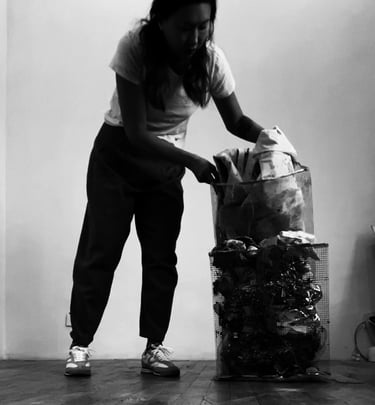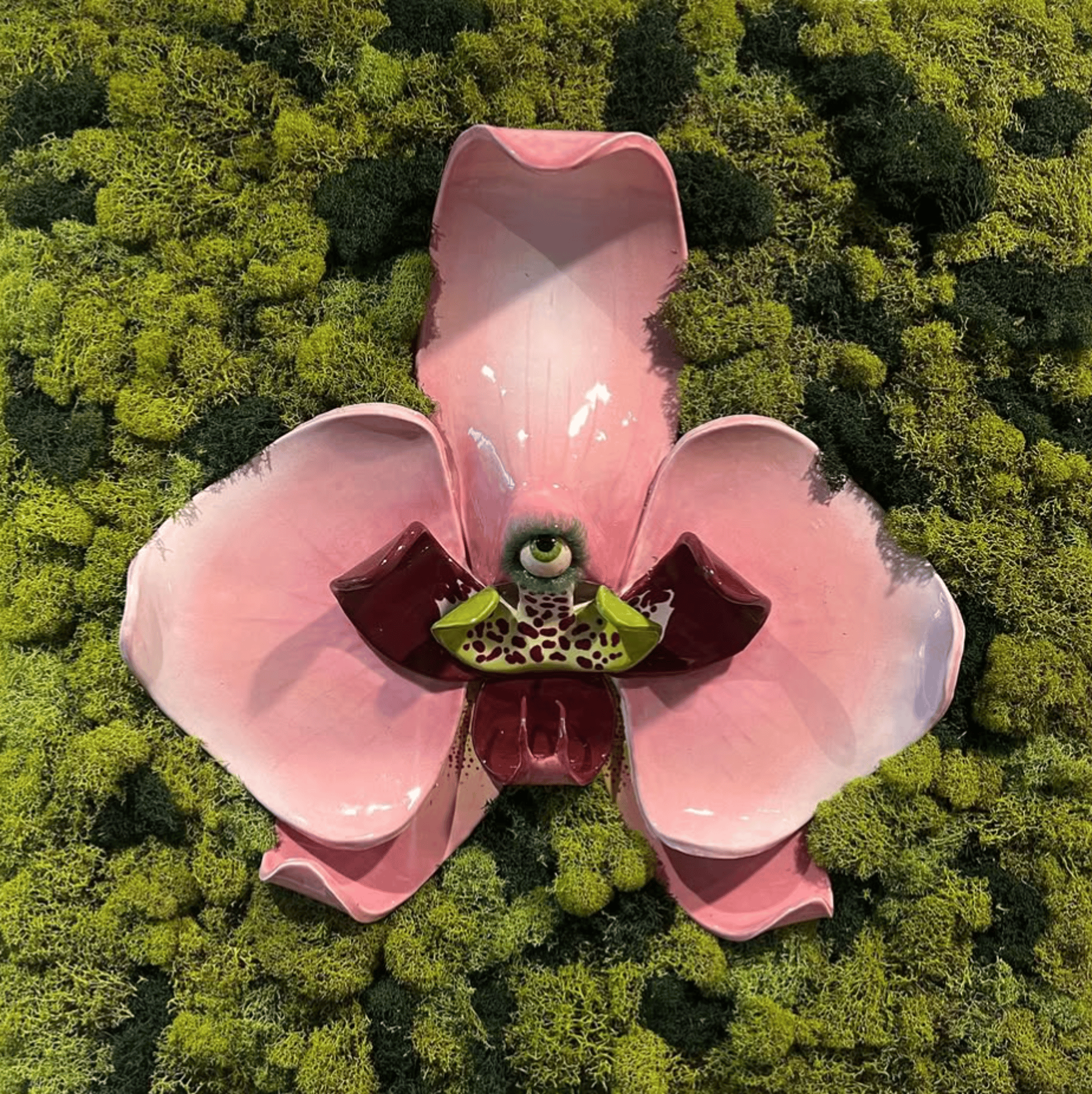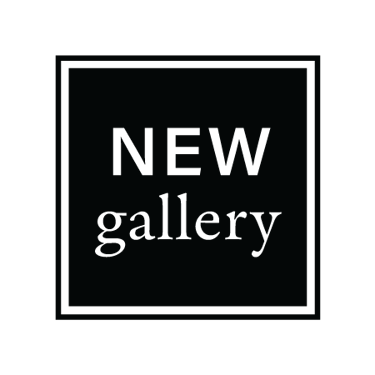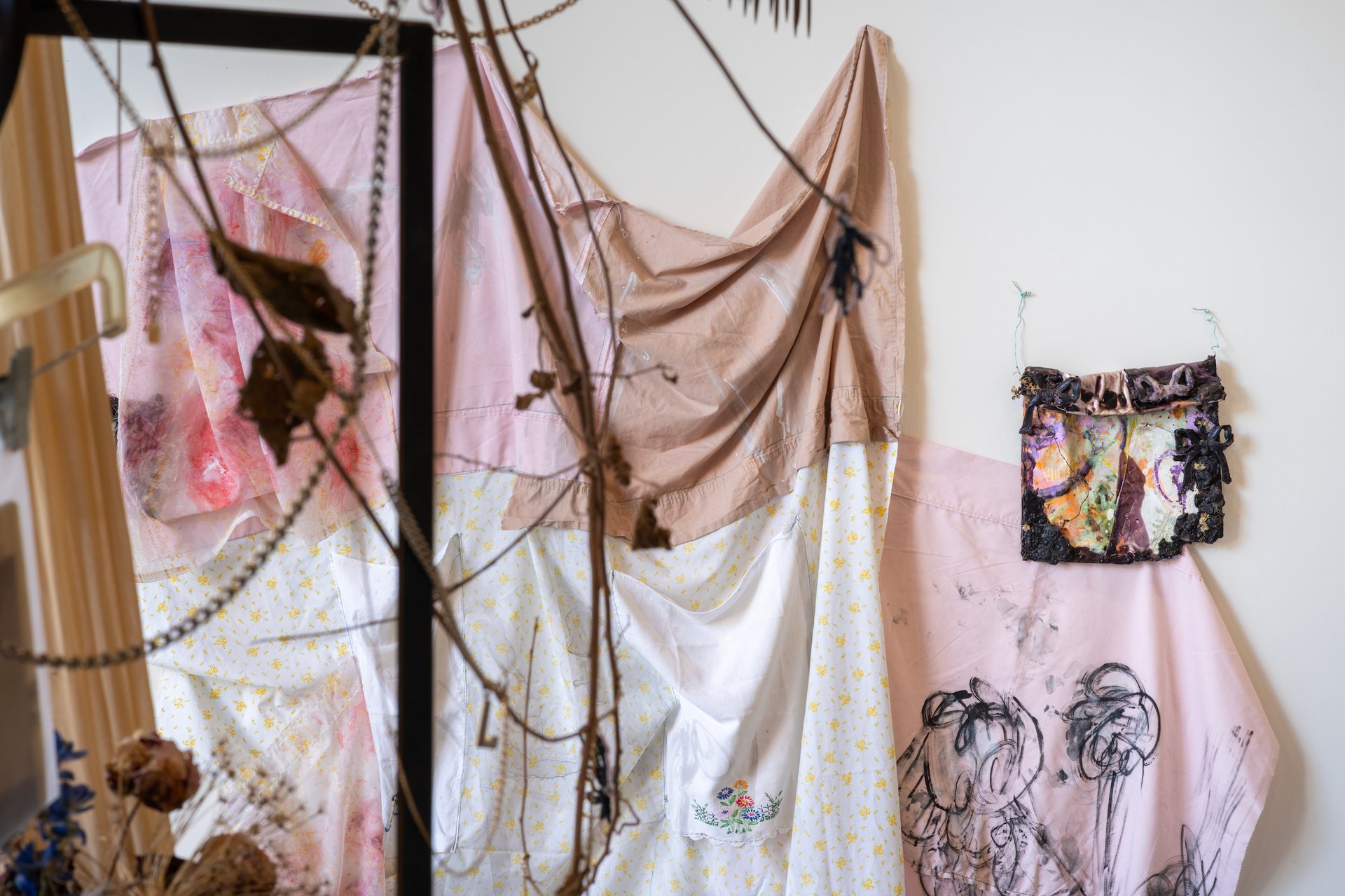
Jenny Halpern: Between Reality and Imagination
As Art City’s June 2025 miar artist, Halpern presented a series of work blending realism and abstraction in What Couldn’t be Said, What Remains and Remembers. With fabric and paint, and metal and wax, the work rejects direct representation and instead offers viewers a series of sensations both familiar and foreign. At once sculptural and two-dimensional, the blurring layers of her work feel like waking dreamscapes—as if at the break of day your memories gently slip away from you before you’re able to see them fully take form.
Here, the artist discusses her creative process, points of reference, and hopes to communicate across both physical and intellectual ideas via her art.
NEW GALLERY: Artists are the core of what we do and why we do it. It's vital to highlight artists' voices, so I'm happy we’re able to chat about your work and miar show. Could you begin by telling me about your practice?
JENNY HALPERN: I'm definitely material driven. I see surfaces as holding memory.
I was in the marketing and advertising world before I became an artist. There, my practice began through image distortion and experimentation in Photoshop. I was overly processing images and working from intuition, really exploring the ambiguous. It became clear that I was drawn to blurring realism and abstraction as a means of understanding form and communication, rather than direct representation
Over time, my work shifted away from the computer and towards painting. I became interested in how surfaces capture movement and time spent in the studio. Today, my practice is all about building layers of texture. This includes paint, resin, wax, clay. It’s all experimentation. Plus, I use domestic materials like bedding.
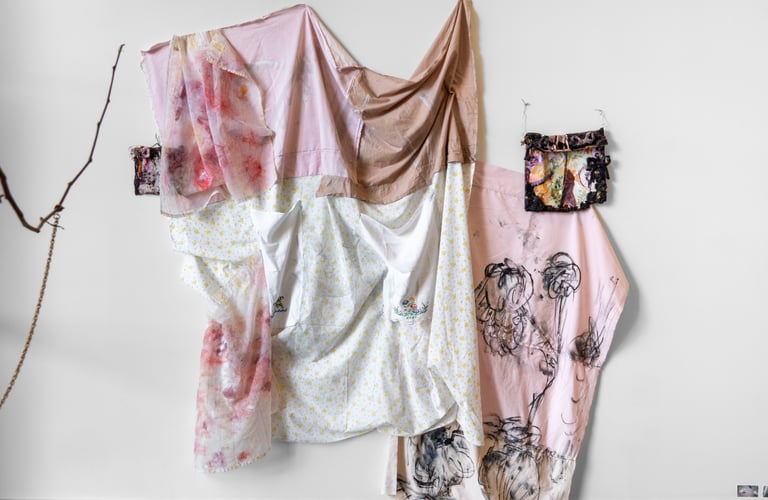


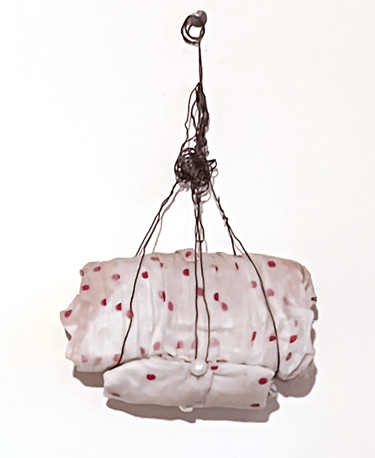
NG: I’m curious about your path from working within the digital realm to then working with a medium as tactile as fabric.
JH: It began with exploring felting. Later, my advisors at SAIC encouraged me to explore more ambitious tools and materials. It was then that I was introduced to jacquard weaving. Because of my familiarity and background working with Photoshop, it wasn’t a difficult transition for me to understand the machine’s binary coding.
NG: Historically, we think of artists as starting with the most “foundational” mediums, like drawing and painting, and then moving on to digital tools as their foundational skills and technology evolves. Your story sounds like the opposite is true.
JH: I feel like that's a running pattern in my life. A lot of people come up with concepts first, whereas I intuitively make and then try to read into it later. As you can imagine, learning about phenomenal work during grad school really resonated with me. Until then, I hadn’t thought about how we might be storing experiences physically ingrained in our tissue, which we can access through the creative process.
NG: That connection between the felt, the seen, and the unseen is so present in your work. In addition to the intuitive and physical way of working, are there sources of inspiration that are important to your process?
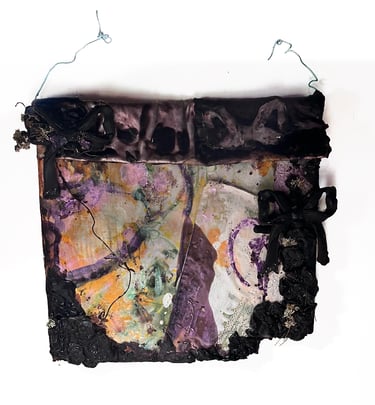

JH: I regularly think about my childhood home. It had ’80s floral patterns everywhere, these Rococo-like horse figurines that my mom loved, brass chandeliers. We also had South Korean water color paintings and Korean tapestries.
When I start a project, I can easily ramble or diverge into these many different directions. I try to stay centered by staring from the same memory of my childhood room and flowers in a vessel. But, I don’t want to oversimplify, because within this reference I'm also recalling something that feels heavy or related to shame.
NG: There is a tension present in your work that reflects that sentiment. With the florals and a rosy palette, is also a darkness that beckons the viewer to try and decipher what it is. That tension is part of life. The beauty and the dark both exist at once.
JH: And that is what makes the ups and downs of living feel more approachable. The pendulum is always swinging. Your worst days are also your best days. It feels very different in those moments when you're living them, but they're both there.
"...that is what makes the ups and downs of living feel more approachable. The pendulum is always swinging. Your worst days are also your best days. It feels very different in those moments when you're living them, but they're both there."
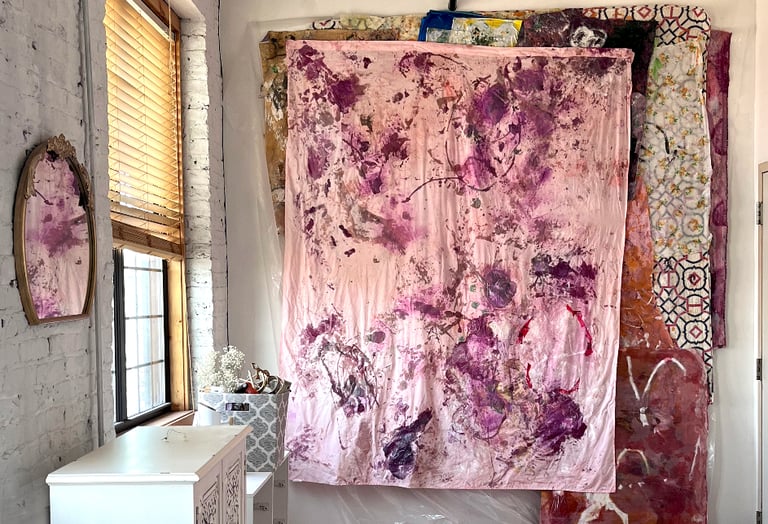

NG: What do you hope viewers see or feel when they interact with your work?
JH: I use a lot of things that feel discarded or like debris. I want viewers to recognize there is emotional value and depth tied to items, not just an assignment of low or high physical quality. Our imperfections, struggles, and experiences are what adds value to material and should be something that we hold dear.
NG: There's constant consumption in our culture, with an endless stream of things being bought and sold. It’s valuable to have a moment to consider what we attribute value to and what we discard.
JH: When working with the miar space, I imagined the installation pinned up like things you would tear from a magazine; like being in the room of a 13 year-old who has pinned up all the things they love. I kind of saw it as wallpapering a room of emotions.
I was also thinking about my daughter. I added one of her favorite “loveys”, you know, the little stuffed toy she takes everywhere. I repainted the way she drew it—it was so pure hearted, a little wonky, but emotive. It was an honest, joyful counterpart to the heavier layers of my work.
NG: Your daughter's presence offers an example of how your artistic point of view might be changing. Which is emphasized by the work hanging throughout the show, like moments torn from the chapters of who you are or where you’ve been.
JH: Through the show, I hope to be contributing to a feminist conversation that celebrates the experiences of working mothers, and labor in general. My work is phenomenal, physical, and emotional, and labor can be very much like that. I want physical labor to be taken as seriously or seen as valuable as solely intellectual work.
It felt like the show could be part of this important conversation about what it means to be a woman, a mother, someone living a complex life, all while being an artist.
"Through the show, I hope to be contributing to a feminist conversation that celebrates the experiences of working mothers, and labor in general... the show could be part of this important conversation about what it means to be a woman, a mother, someone living a complex life, all while being an artist."
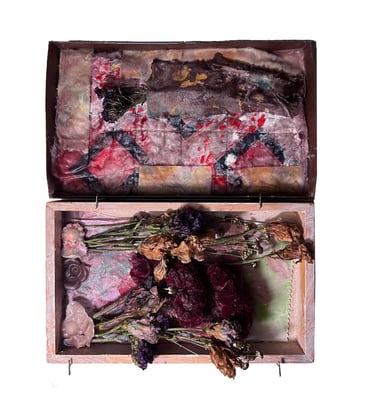

Jenny Halpern is a painter and educator based in Chicago whose work explores liminal spaces where memory, domesticity, and the body become significant elements. She earned her MFA from the School of the Art Institute of Chicago’s Painting and Drawing Department in 2023. In addition to being shown at Art City’s MIAR gallery, her work has been featured in Studio Visit Magazine (Vol. 53) and exhibited at Rushwoman, Yes Project Space at Zhou B Art Center, NEIU Fine Arts Center Gallery, The Art Institute of Chicago, JULIUS CAESAR, Color Club, Hyde Park Art Center, Woman Made Gallery, CNL Projects, Latin School Gallery, Heaven Gallery, Noyes Cultural Arts Center, Parlour and Ramp, Ivory Gate Gallery, and the Chicago Cultural Center.

